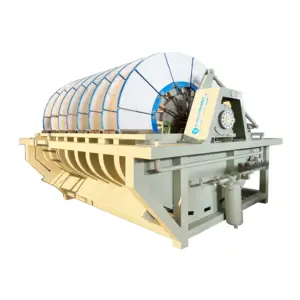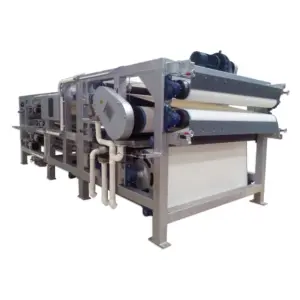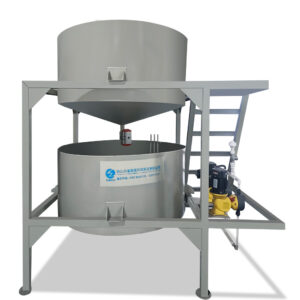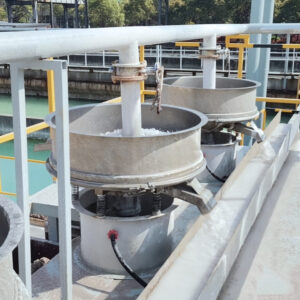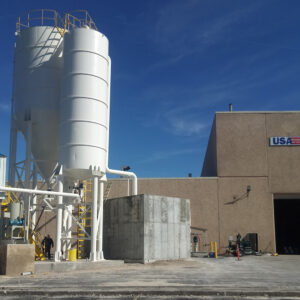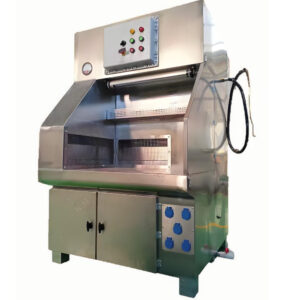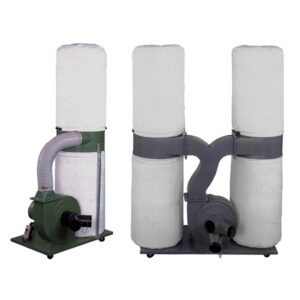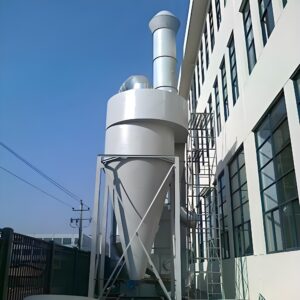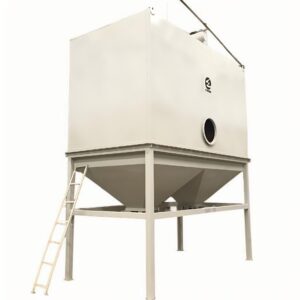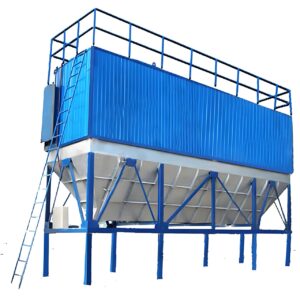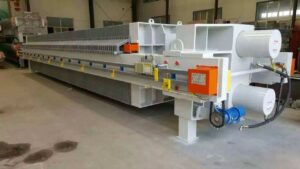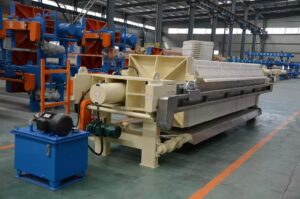The wastewater treatment industry stands at a critical juncture. With global water scarcity affecting over 2 billion people and industrial discharge regulations becoming increasingly stringent, traditional treatment methods are struggling to meet modern demands. Aging infrastructure, rising operational costs, and the need for higher treatment standards create mounting pressure on facilities worldwide.
Without adopting innovative solutions, organizations face escalating compliance issues, operational inefficiencies, and environmental liabilities that could cost millions in penalties and remediation efforts. The consequences extend beyond financial impact—communities suffer from compromised water quality, and ecosystems bear the burden of inadequate treatment.
This comprehensive analysis explores cutting-edge future wastewater technology innovations that are reshaping the industry in 2025. From AI-powered monitoring systems to breakthrough membrane technologies, we’ll examine how these advances address current challenges while delivering measurable improvements in efficiency, sustainability, and cost-effectiveness.
What is Future Wastewater Technology and Why Does It Matter?
Future wastewater technology represents a paradigm shift from reactive treatment processes to proactive, intelligent systems that optimize performance in real-time. These innovations integrate artificial intelligence, advanced materials science, and sustainable engineering principles to create treatment solutions that adapt dynamically to changing conditions.
The Evolution Beyond Traditional Methods
Modern wastewater treatment has evolved far beyond simple physical and biological processes. PORVOO Clean Tech and other industry leaders are developing systems that combine multiple advanced technologies into integrated platforms. These systems utilize predictive analytics to anticipate treatment needs, automatically adjust parameters, and maintain optimal performance regardless of influent variability.
The significance extends beyond technical improvements. According to recent industry analysis, facilities implementing next-generation technologies report 35-45% reductions in operational costs while achieving 99.7% treatment efficiency rates. This transformation addresses the dual challenge of meeting stricter environmental standards while maintaining economic viability.
Key Drivers of Innovation
Several factors accelerate the adoption of advanced wastewater solutions:
| Driver | Impact Level | Timeline |
|---|---|---|
| Regulatory Compliance | High | Immediate |
| Water Scarcity | Critical | 2025-2030 |
| Energy Efficiency | Medium | Ongoing |
| Remote Monitoring | High | 2024-2025 |
The regulatory landscape particularly influences innovation priorities. New discharge standards for nutrients, pharmaceuticals, and emerging contaminants require treatment capabilities that exceed traditional system limitations. Organizations must either upgrade existing infrastructure or risk significant penalties and operational disruptions.
How Are Smart Water Treatment Systems Revolutionizing the Industry?
Smart water treatment systems represent the convergence of Internet of Things (IoT) technology, machine learning algorithms, and advanced process control. These systems transform wastewater facilities from manually operated plants into autonomous, self-optimizing treatment centers that respond intelligently to changing conditions.
Real-Time Monitoring and Predictive Analytics
The foundation of smart systems lies in comprehensive sensor networks that monitor hundreds of parameters simultaneously. Advanced installations feature sensors measuring pH, dissolved oxygen, turbidity, nutrient levels, and microbial activity with unprecedented precision. This data feeds into AI algorithms that identify patterns, predict equipment failures, and optimize treatment processes automatically.
In our experience working with municipal facilities, predictive maintenance capabilities alone deliver 25-30% reductions in unscheduled downtime. The systems analyze equipment performance trends, vibration patterns, and energy consumption to schedule maintenance during optimal windows, preventing costly emergency repairs.
Automated Process Control Integration
Modern smart water treatment systems incorporate sophisticated control algorithms that adjust treatment parameters in real-time. These systems respond to influent quality changes within minutes, maintaining consistent effluent standards regardless of input variability. The automation extends beyond basic parameter control to include chemical dosing optimization, energy management, and process staging.
“The integration of AI-driven process control has fundamentally changed how we approach wastewater treatment. Systems that once required constant human oversight now operate autonomously for weeks, maintaining performance levels that exceed manual operation capabilities.” – Dr. Sarah Chen, Water Technology Research Institute
However, implementation requires careful consideration of cybersecurity protocols and staff training requirements. While automation reduces operational complexity, it demands skilled technicians capable of managing sophisticated control systems and interpreting analytical data.
What Advanced Technologies Are Driving Wastewater Innovation in 2025?
The wastewater technology trends 2025 landscape features several breakthrough innovations that address traditional treatment limitations while opening new possibilities for resource recovery and environmental protection.
Revolutionary Membrane Technologies
Next-generation membrane systems utilize advanced materials engineering to achieve unprecedented separation efficiency. Forward osmosis membranes, combined with novel draw solutions, enable water recovery rates exceeding 95% while requiring 40-60% less energy than conventional reverse osmosis systems.
Recent developments in graphene-enhanced membranes demonstrate remarkable fouling resistance and extended operational lifespans. These materials maintain consistent performance for 3-5 years compared to traditional membrane replacement cycles of 12-18 months. The longevity translates to significant cost savings and reduced maintenance requirements.
Biological Treatment Innovations
Advanced water treatment technology increasingly focuses on enhanced biological processes that accelerate treatment rates while expanding contaminant removal capabilities. Anaerobic membrane bioreactors (AnMBRs) combine biological treatment with membrane separation, achieving 90-95% organic matter removal while generating biogas for energy recovery.
Innovative approaches include engineered biofilms and specialized microbial communities designed for specific contaminant removal. These biological systems address emerging pollutants, including pharmaceuticals, personal care products, and industrial chemicals that traditional processes cannot effectively remove.
Energy Recovery and Sustainability Features
Modern treatment facilities increasingly function as energy-neutral or energy-positive operations. Advanced anaerobic digestion systems, combined with combined heat and power (CHP) units, generate sufficient electricity to power entire treatment facilities while producing excess energy for grid export.
| Technology | Energy Recovery Rate | Implementation Cost | ROI Timeline |
|---|---|---|---|
| Anaerobic Digestion | 60-80% | Medium | 3-5 years |
| Microturbines | 15-25% | Low | 2-3 years |
| Solar Integration | 30-50% | High | 5-7 years |
| Heat Recovery | 40-60% | Medium | 2-4 years |
The circular economy principles driving these innovations transform wastewater from a disposal challenge into a resource recovery opportunity. Facilities now extract valuable materials including nitrogen, phosphorus, and organic compounds while generating clean water and renewable energy.
How Do Next Generation Treatment Solutions Address Current Challenges?
Next generation wastewater systems tackle the industry’s most persistent challenges through innovative engineering approaches that combine multiple treatment technologies into integrated, efficient platforms.
Modular Design and Scalability
Contemporary treatment systems embrace modular architectures that enable rapid deployment and easy expansion. These designs allow facilities to start with basic treatment capabilities and add advanced modules as needs evolve or regulations change. The modular approach reduces initial capital investment while providing flexibility for future upgrades.
A recent installation at a growing industrial facility demonstrates this approach’s effectiveness. The initial system handled 500,000 gallons per day with basic treatment capabilities. Additional modules added over 18 months expanded capacity to 1.2 million gallons per day while incorporating advanced nutrient removal and water reuse capabilities.
Addressing Emerging Contaminants
Traditional treatment processes struggle with emerging contaminants, including pharmaceutical compounds, microplastics, and perfluorinated chemicals. Innovative wastewater solutions combine advanced oxidation processes, activated carbon systems, and specialized biological treatment to address these challenging pollutants.
Advanced oxidation using ozone and UV light effectively breaks down complex organic molecules that resist conventional treatment. Combined with biological treatment stages, these systems achieve removal rates exceeding 99% for most pharmaceutical compounds and personal care products.
Resilience and Reliability Improvements
Modern systems incorporate redundancy and fail-safe mechanisms that maintain operation during equipment failures or extreme conditions. Dual-train configurations ensure continuous operation during maintenance periods, while advanced monitoring systems provide early warning of potential issues.
The integration of energy storage systems and backup power generation creates resilient facilities that maintain critical operations during power outages or emergency conditions. Battery storage systems, combined with on-site renewable energy generation, provide 24-48 hours of autonomous operation capability.
What Are the Economic and Environmental Benefits of Modern Systems?
The financial and environmental advantages of advanced wastewater treatment technologies extend far beyond initial implementation costs, creating compelling value propositions for organizations across all sectors.
Cost Reduction Analysis
Comprehensive lifecycle cost analysis reveals significant savings from modern treatment systems. While initial capital costs may exceed traditional alternatives by 15-25%, operational savings typically recover this premium within 2-3 years. Energy efficiency improvements alone deliver 30-40% reductions in utility costs, while automated operation reduces labor requirements by 20-30%.
Environmental Impact Improvements
Advanced treatment systems achieve environmental benefits that extend beyond regulatory compliance. Nutrient removal capabilities prevent eutrophication in receiving waters, while advanced disinfection eliminates pathogen risks. The systems also reduce greenhouse gas emissions through energy recovery and optimized treatment processes.
“The environmental benefits of modern wastewater treatment extend throughout the entire water cycle. We’re seeing facilities that not only meet discharge standards but actively contribute to watershed restoration and ecosystem health.” – Environmental Protection Agency Technical Advisory Committee
Resource recovery capabilities transform environmental liabilities into valuable outputs. Biogas generation, nutrient recovery, and water reuse create revenue streams while reducing environmental impact. Facilities implementing comprehensive resource recovery report 40-60% reductions in overall environmental footprint.
Long-Term Value Creation
The economic benefits compound over time as systems learn and optimize performance. Machine learning algorithms continuously improve treatment efficiency, reduce chemical consumption, and minimize energy usage. These improvements create value that increases throughout the system’s operational lifetime.
| Benefit Category | Year 1 | Year 5 | Year 10 |
|---|---|---|---|
| Energy Savings | 25% | 40% | 55% |
| Chemical Reduction | 15% | 30% | 45% |
| Maintenance Costs | 10% | 35% | 50% |
| Overall ROI | 8% | 22% | 35% |
How Can Organizations Successfully Implement These Technologies?
Successful implementation of advanced wastewater treatment technologies requires strategic planning, stakeholder engagement, and careful attention to operational transition requirements.
Implementation Strategy Development
Organizations should begin with comprehensive needs assessment that evaluates current system performance, regulatory requirements, and future growth projections. This analysis identifies specific technology requirements and establishes realistic performance targets for new systems.
Phased implementation approaches minimize operational disruption while allowing gradual staff training and system optimization. Most successful projects implement core treatment improvements first, followed by advanced monitoring and control systems, and finally resource recovery capabilities.
Technology Selection and Integration
Selecting appropriate technologies requires balancing performance requirements, operational complexity, and economic considerations. Advanced wastewater treatment systems should integrate seamlessly with existing infrastructure while providing clear upgrade paths for future enhancements.
Organizations benefit from partnering with experienced technology providers who offer comprehensive support throughout implementation and operational phases. Technical support, training programs, and ongoing optimization services ensure systems achieve projected performance levels.
Staff Training and Change Management
Advanced systems require skilled operators capable of managing sophisticated control systems and interpreting complex analytical data. Training programs should begin during system installation and continue throughout operational startup phases.
Change management strategies address staff concerns about automation and new operational procedures. Involving operators in system design and testing phases builds confidence and ensures smooth operational transitions.
Conclusion
The future of wastewater treatment is arriving rapidly, driven by technological innovations that address longstanding industry challenges while creating new opportunities for resource recovery and environmental protection. From AI-powered monitoring systems to revolutionary membrane technologies, these advances deliver measurable improvements in efficiency, sustainability, and cost-effectiveness.
Organizations that embrace these innovations position themselves advantageously for increasingly stringent regulatory requirements while achieving significant operational and environmental benefits. The integration of smart systems, advanced treatment processes, and resource recovery capabilities creates resilient, efficient facilities that transform wastewater management from a necessary expense into a value-creating operation.
Success requires strategic planning, appropriate technology selection, and commitment to staff development and change management. However, the compelling economic and environmental benefits make adoption of future wastewater technology not just an opportunity, but an imperative for organizations seeking long-term sustainability and operational excellence.
The transition to next-generation treatment systems represents more than technological advancement—it embodies a fundamental shift toward sustainable water management that protects communities and ecosystems while creating economic value. For organizations ready to embrace this transformation, comprehensive wastewater treatment solutions provide the foundation for achieving these ambitious goals.
As we move forward, the question isn’t whether to adopt these technologies, but how quickly organizations can implement them to capture the substantial benefits they offer. The future of wastewater treatment is here—are you ready to embrace it?
Frequently Asked Questions
Q: What is Future Wastewater Technology and why is it important for 2025?
A: Future Wastewater Technology refers to the emerging innovations and advanced solutions designed to improve how wastewater is treated, managed, and reused by 2025. It is important because these technologies focus on increasing efficiency, reducing environmental impact, and supporting sustainability goals. Key drivers include AI, IoT, energy-efficient systems, and decentralized treatment methods that help conserve water, minimize waste, and save energy in both urban and industrial settings.
Q: How are AI and IoT shaping innovation trends in wastewater treatment by 2025?
A: AI and IoT are revolutionizing wastewater management by enabling real-time monitoring, predictive maintenance, and process optimization. AI algorithms help in chemical dosing, energy use, and failure prediction, while IoT sensors collect continuous data to ensure compliance and efficient operation. Together, they reduce operational costs, minimize human intervention, and increase the reliability of wastewater treatment plants, making them smarter and more adaptive.
Q: What are decentralized wastewater treatment systems and their benefits in innovation trends for 2025?
A: Decentralized wastewater treatment systems treat water locally rather than relying solely on large centralized plants. These smaller-scale, modular systems benefit industries, hospitals, and residential areas by:
- Reducing transportation and infrastructure costs
- Enhancing onsite water purification and reuse
- Increasing flexibility in remote or underserved locations
Such systems are becoming a key trend in future wastewater technology, boosting sustainability and operational efficiency.
Q: Which energy-efficient technologies are predicted to become mainstream in wastewater treatment by 2025?
A: By 2025, energy-efficient and carbon-neutral technologies like anaerobic digestion and bioenergy recovery will become more common. These methods generate energy directly from wastewater treatment processes, helping plants reduce their greenhouse gas footprint. Other innovations include optimization of aeration and chemical dosing through AI, leading to significant energy savings and a greener wastewater treatment industry.
Q: What role does advanced material science play in future wastewater technology innovation trends?
A: Advanced materials like corrosion-resistant metals, high-performance polymers, and nanotechnology are critical to future wastewater treatment improvements. Additive manufacturing (3D printing) enables the design of custom components such as pipe fittings and filters with enhanced durability and flow control. These materials contribute to longer-lasting infrastructure, less maintenance, and greater adaptability to emerging treatment needs in 2025 and beyond.
Q: How does the focus on sustainability influence wastewater technology trends in 2025?
A: Sustainability is a core driver of wastewater innovation trends for 2025. Technologies emerging this year prioritize resource recovery, water reuse, and reduction of pollutants while aiming for carbon neutrality. Smart monitoring and AI-driven processes maximize efficiency and minimize waste. Additionally, these advancements support ESG goals by reducing environmental impact and promoting circular water economies through safer water reuse in agriculture, industry, and urban applications.
External Resources
- Top wastewater treatment trends in 2025 and beyond – This video explores major trends shaping industrial wastewater treatment in 2025, including IoT, AI, digital twins, advanced materials, and the impact of ESG goals.
- WATER TECHNOLOGY TRENDS 2025 – This white paper details how artificial intelligence, analytics, automation, and data-driven optimization are set to transform wastewater treatment by 2025, emphasizing sustainability and efficiency.
- Wastewater Treatment Technology in 2025 – This report reviews key innovations for 2025, spotlighting additive manufacturing, AI, big data, robotics, and startups developing new biofuel cell technologies.
- TOP EIGHT TECHNOLOGICAL TRENDS – This article summarizes the top technological trends impacting wastewater management in 2025, including digitalization and integration with smart city frameworks.
- 8 Tech Trends Reshaping Water Treatment in 2025 – A concise overview of technology trends like AI-driven data usage, cybersecurity, advanced sensors, and modular plant design for the wastewater sector.
- The Future of Wastewater Treatment: 2025 and Beyond – This resource discusses the evolving landscape for wastewater technology, covering digital twins, advanced filtration, and energy-efficient treatment solutions projected for 2025.
